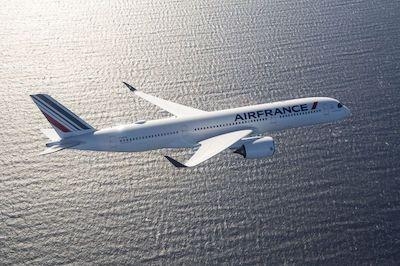Fri, Jan 01, 2021
AD 2020-26-21 Requires A Rotating Probe Test Of All Fastener Holes Located In The Affected Area
The FAA is adopting a new airworthiness directive (AD) for certain Airbus SAS Model A350-941 airplanes.

This AD was prompted by a report that during the assembly of a certain section of the fuselage, the gaps found on self-aligning nuts for eight fasteners were out of tolerance. This AD requires a rotating probe test of all fastener holes located in the affected area for any discrepancies, an eddy current inspection of the surrounding flange for any discrepancies, a detailed inspection of certain frames for any discrepancies, and corrective actions if necessary, as specified in a European Union Aviation Safety Agency (EASA) AD, which is incorporated by reference. The FAA is issuing this AD to address the unsafe condition on these products. This AD is effective February 3, 2021.
Supplementary Information: The EASA, which is the Technical Agent for the Member States of the European Union, has issued EASA AD 2020-0109, dated May 15, 2020 (EASA AD 2020-0109) (also referred to as the Mandatory Continuing Airworthiness Information, or the MCAI), to correct an unsafe condition for certain Airbus SAS Model A350-941 airplanes.
The FAA issued a notice of proposed rulemaking (NPRM) to amend 14 CFR part 39 by adding an AD that would apply to certain Airbus SAS Model A350-941 airplanes. The NPRM published in the Federal Register on August 4, 2020 (85 FR 47122). The NPRM was prompted by a report that during the assembly of the section 19 skin to frame (FR) 98 joint of the fuselage, the gaps found on self-aligning nuts for eight fasteners were out of tolerance. The NPRM proposed to require a rotating probe test of all fastener holes located in the affected area for any discrepancies, an eddy current inspection of the surrounding flange for any discrepancies, a detailed inspection of certain frames for any discrepancies, and corrective actions if necessary, as specified in an EASA AD.
The FAA is issuing this AD to address gaps that are out of tolerance, which could reduce the fatigue and damage tolerance properties of the affected area, and possibly affect the structural integrity of the rear cone of the fuselage. See the MCAI for additional background information.
More News
Airplane Bounced About 3 Ft Then Touched Back Down And Then, With No Brakes Applied, The Airplane Began Veering To The Left Analysis: The pilot entered the airport traffic pattern >[...]
Aero Linx: British Microlight Aircraft Association (BMAA) The primary focus within all aviation activity is SAFETY. In all aspects of our sport SAFETY must come first, whether it b>[...]
From SnF25 (YouTube Edition): William Wynne Builds Practical Aircraft Engines on the Corvair Platform Seeking an affordable alternative to the traditional aircraft engine options, >[...]
How To Get A Story On Aero-TV News/Feature Programming How do I submit a story idea or lead to Aero-TV? If you would like to submit a story idea or lead, please contact Jim Campbel>[...]
From 2023 (YouTube Edition): Bridge of CiES CiES Inc. is a Bend, Oregon-based designer and manufacturer of modular embedded aircraft systems and sensors. The company’s fuel-l>[...]
 NTSB Final Report: Aviat A1
NTSB Final Report: Aviat A1 ANN's Daily Aero-Linx (07.08.25)
ANN's Daily Aero-Linx (07.08.25) Classic Aero-TV: Fly Corvairs Reliable Engine Alternative
Classic Aero-TV: Fly Corvairs Reliable Engine Alternative ANN FAQ: Contributing To Aero-TV
ANN FAQ: Contributing To Aero-TV Classic Aero-TV: CiES Fuel-Quantity and e-Throttle Systems Praised
Classic Aero-TV: CiES Fuel-Quantity and e-Throttle Systems Praised



